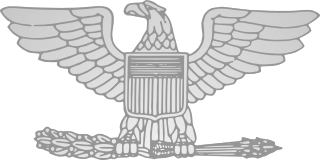The Confederate order of battle during the Battle of Gettysburg includes the American Civil War officers and men of the Army of Northern Virginia (multiple commander names indicate command succession during the three-day battle . Order of battle compiled from the army organization during the battle, the casualty returns and the reports.
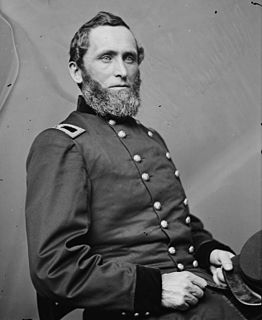
Benjamin Mayberry Prentiss was an American soldier and politician. He fought in the Mexican–American War and on the Union side of the American Civil War, rising to the rank of major general. He commanded a division at the Battle of Shiloh, which suffered heavy casualties while defending what became known as the Hornet's Nest from continued Confederate assaults. He was criticized by some for his conduct, and eventually had to surrender his division. After his exchange, he continued to serve in the army until his resignation in 1863. He spent much of his remaining life practicing as a lawyer and as a politician in the Republican Party.
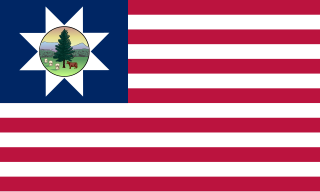
The 1st Regiment, Vermont Volunteer Cavalry was a three years' cavalry regiment in the Union Army during the American Civil War. It served in the Eastern Theater from November 1861 to August 1865, in the Cavalry Corps, Army of the Potomac.
The following Union Army units and commanders fought in the Battle of Fredericksburg of the American Civil War. Order of battle compiled from the army organization during the campaign. The Confederate order of battle is listed separately.
The following Union Army units and commanders fought in the Battle of Spotsylvania Court House of the American Civil War. The Confederate order of battle is listed separately. Order of battle compiled from the casualty returns and the reports.
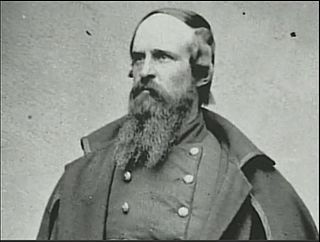
Edward Ephraim Cross was a newspaperman and an officer in the Union Army during the American Civil War.
The following United States Army units and commanders fought in the Battle of McDowell of the American Civil War. The Confederate order of battle is listed separately.
The following United States Army units and commanders fought in the Battle of Williamsburg of the American Civil War. The Confederate order of battle is shown separately.
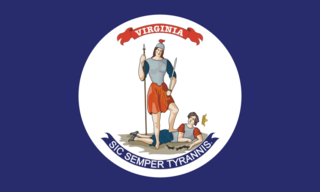
The 9th Virginia Volunteer Cavalry Regiment was a cavalry regiment raised in Virginia for service in the Confederate States Army during the American Civil War. It fought mostly with the Army of Northern Virginia.
The following Union Army units and commanders fought in the Battle of Belmont of the American Civil War. The Confederate order of battle is listed separately.
The following Union Army units and commanders fought in the Battle of Arkansas Post (1863) of the American Civil War. The Confederate order of battle is listed separately. Order of battle compiled from the army organization and return of casualties during the battle.
The following Confederate Army units and commanders fought in the Battle of Arkansas Post (1863) of the American Civil War. The Union order of battle is listed separately.
The following Confederate Army units and commanders fought in the Battle of Raymond of the American Civil War which took place may 12th, 1863 during the Vicksburg Campaign. The Union order of battle is listed separately.

The 18th North Carolina Infantry Regiment was an infantry regiment raised in North Carolina for service in the Confederate States Army during the American Civil War. It fought mostly with the Army of Northern Virginia.
The 5th New Hampshire Volunteer Infantry was an infantry regiment that served in the Union Army during the American Civil War. The regiment has the unfortunate distinction of having sustained the greatest total loss in battles of any infantry or cavalry regiment in the Union Army, with a total of 295 killed and 756 wounded, for a total of 1,051 men.
The 13th New York Volunteer Infantry was an infantry regiment in the Union Army during the American Civil War.
The 62nd Pennsylvania Volunteer Infantry was an infantry regiment that served in the Union Army during the American Civil War.

The 12th New York Volunteer Infantry was an infantry regiment in the Union Army during the American Civil War.
The 17th New York Volunteer Infantry was an infantry regiment in the Union Army during the American Civil War.




